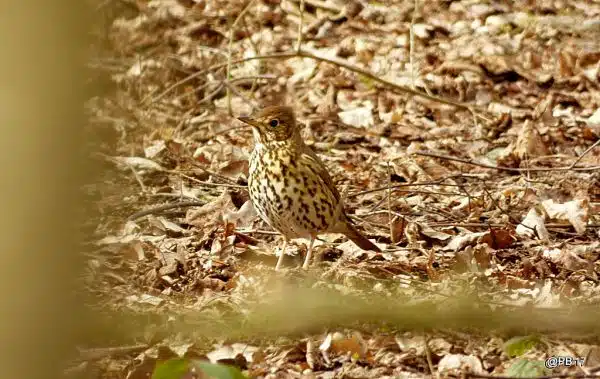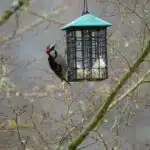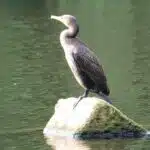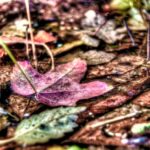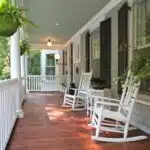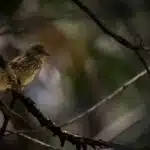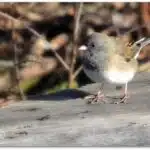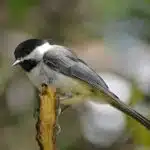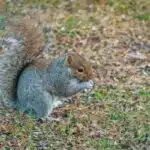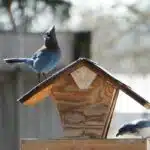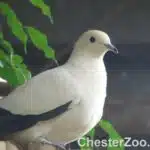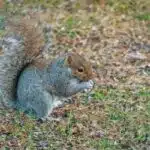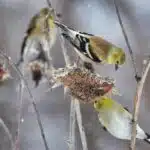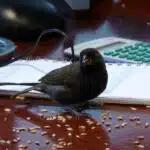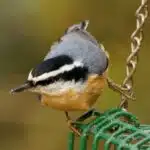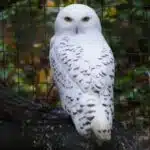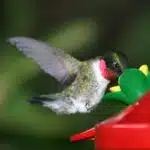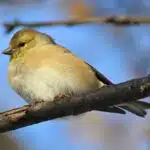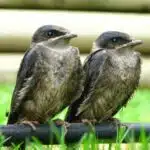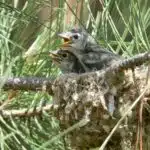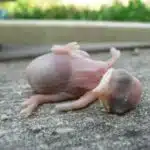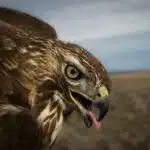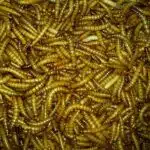Thrushes, a family of songbirds known for their melodious calls and striking plumage, are a delight to observe in any backyard. Attracting these birds to your yard is not only an enjoyable experience but also has ecological benefits such as pest control and pollination. However, attracting thrushes requires more than just putting up a bird feeder. In this article, we will discuss the ecological significance of thrushes, factors that influence their presence in a yard, and practical steps that can be taken to attract them.
Thrushes play an important role in maintaining the balance of ecosystems by consuming insects and fruit-bearing plants. These birds are mainly ground foragers but also feed on fruits and berries found on shrubs or trees. With habitat loss due to urbanization and agricultural expansion, providing food sources and shelter for thrushes in residential areas has become crucial for their survival. To attract these birds to your yard, it is essential to create an environment that mimics their natural habitat while keeping in mind the specific needs and preferences of different species of thrushes.
The Ecological Significance Of Thrushes
Thrushes are a group of birds known for their melodious songs and intricate patterns on their feathers. However, they also play a vital role in the ecosystem as seed dispersers and insectivores. Thrushes help to maintain the balance of nature by controlling the population of insects and other small invertebrates that can damage crops or spread diseases.
Despite their ecological importance, thrush populations face several threats. Habitat loss due to deforestation, urbanization, and agriculture is one of the primary challenges faced by these birds. The destruction of natural habitats has resulted in a decline in the availability of food sources and nesting sites for thrushes. Additionally, climate change has impacted migratory patterns and breeding cycles of thrushes, leading to further declines in their populations.
As wildlife biologists or ornithologists, understanding the ecological significance of thrushes is crucial for devising conservation strategies that can protect these birds from extinction. By addressing the threats facing these species through habitat restoration, protection, and public awareness programs, we can help ensure their survival for future generations. Understanding thrush behavior and habits is an important first step towards creating an environment conducive to attracting them into our yards.
Understanding Thrush Behavior And Habits
As we have discussed in the previous section, thrushes play a critical role in maintaining ecological balance. However, attracting these feathered friends to your yard can be a daunting task. Understanding their behavior and habits is crucial in creating an environment that appeals to these birds.
Thrush migration patterns are an essential aspect to consider when trying to attract them to your yard. In North America, thrushes typically migrate south for the winter and return north during springtime. Creating a hospitable environment with food sources and shelter during their migration periods can significantly increase the likelihood of attracting them.
Thrush vocalizations are another critical factor that bird enthusiasts should consider. Different species of thrushes have unique calls that they use for communication, mating, and warning other birds about potential threats. By familiarizing yourself with their unique vocalizations, you can quickly identify which species of thrushes are present in your area and take steps towards creating a welcoming habitat for them.
Moving forward, identifying different species of thrushes in your area is the next step towards attracting them to your yard successfully. Understanding their physical characteristics and behaviors can help create an environment that suits their specific needs. Let us delve deeper into identifying various species of thrushes and how to attract them to your yard effectively.
Identifying Thrush Species In Your Area
Thrushes are a diverse group of birds found throughout much of the world. In North America, the most common species include the American Robin, Wood Thrush, and Hermit Thrush. It is important to be able to identify these species, as they each have unique characteristics that distinguish them from one another.
One way to identify thrush species is by their vocalizations. Each species has a distinct song and call that can help birdwatchers differentiate between them. For instance, the American Robin has a melodic and cheerful song consisting of clear whistles and trills, while the Hermit Thrush has a more haunting and ethereal song consisting of flute-like tones. Additionally, observing physical characteristics such as size, coloration, and markings can also aid in identification.
It is also important for birdwatchers to understand thrush migration patterns. Many thrushes migrate long distances each year between breeding grounds in the north during the summer months and wintering grounds in the south during the winter months. By knowing when certain species are likely to be present in your area based on migration patterns, you can increase your chances of identifying them correctly.
Creating A Suitable Habitat For Thrushes
- Planting trees is essential for creating a suitable habitat for thrushes, as they use them for nesting and foraging.
- Creating water features, such as birdbaths, can provide a vital source of water for thrushes.
- Providing food sources, such as berries, insects, and seeds, can help to attract thrushes to the area.
- Planting native trees and shrubs can provide a more suitable habitat for thrushes and can also support a broader range of wildlife.
- Different types of water features can attract different species of thrushes, so it is important to research which ones are most suitable for the area.
- A variety of food sources and water features should be provided in order to attract a range of thrushes and maintain a healthy population in the area.
Planting Trees
The selection of trees is crucial in creating a suitable habitat for thrushes. Trees provide shelter, nesting sites, and food sources for these birds. When choosing trees to plant in your yard, it is important to consider the specific needs of thrushes. Some species prefer taller trees with dense foliage for nesting, while others prefer fruit-bearing trees for food. It is also important to select native tree species as they are more likely to support local bird populations.
Planting techniques can greatly affect the success of tree growth and ultimately the suitability of the habitat for thrushes. Proper planting techniques ensure that the tree will establish well and grow strong roots, which in turn will support a healthy canopy for nesting and feeding opportunities. The planting hole should be at least twice the diameter of the root ball and deep enough so that the top of the root ball is level with or slightly above ground level. Adequate water and fertilizer should be provided during initial establishment.
Overall, planting appropriate trees using proper planting techniques is an important step in creating a suitable habitat for thrushes in your yard. By providing appropriate shelter, nesting sites, and food sources, you can attract these birds to your yard and help support local bird populations. It is important to remember that creating a suitable habitat requires ongoing effort including maintenance of trees, shrubs, and other vegetation as well as management of pests and predators that may threaten bird populations in your area.
Creating Water Features
Creating a suitable habitat for thrushes in your yard involves more than just planting appropriate trees; it also requires providing sources of water. Water features such as DIY fountains or bird bath designs can attract thrushes and provide them with the necessary hydration they need to survive. In addition to drinking, thrushes also use water for bathing, which helps maintain their feathers and remove parasites.
When designing water features for thrushes, it is important to consider the size and depth of the feature. A shallow bird bath with sloping sides is ideal as it allows birds to easily access the water while minimizing the risk of drowning. Adding rocks or other textured surfaces can also make it easier for birds to grip onto while bathing. In addition, regularly cleaning and changing the water can prevent the spread of disease among bird populations.
Overall, incorporating water features into your yard can greatly enhance its suitability as a habitat for thrushes. By providing sources of hydration and bathing opportunities, you are helping to support local bird populations and creating a welcoming environment for these beautiful creatures. With careful planning and consideration of design elements, you can create a thriving ecosystem that benefits both wildlife and humans alike.
Providing Food Sources
Feeding strategies are essential in creating a suitable habitat for thrushes. These birds rely on a variety of food sources to meet their nutritional needs, including insects, fruits, and seeds. Providing these food sources in your yard can attract thrushes and support their survival. One effective feeding strategy is to plant fruit-bearing shrubs and trees such as blueberries, serviceberries, and elderberries. These plants not only provide a natural source of food for thrushes but also add aesthetic value to your yard.
Another way to attract thrushes is by offering birdseed in feeders. When selecting birdseed, it is important to choose high-quality blends that include a variety of seeds such as sunflower seeds, millet, and safflower seeds. Additionally, providing suet or mealworms can be an excellent protein source for these birds during the winter months when insects are less abundant.
It is important to note that while providing food sources can greatly benefit thrush populations, it is equally important to maintain feeding areas properly. This includes regularly cleaning feeders to prevent the spread of disease among birds and avoiding overfeeding which can lead to excess waste buildup and attract unwanted pests. With proper feeding strategies in place, you can create a thriving ecosystem that supports the survival of these beautiful birds in your own backyard.
Providing Adequate Food Sources For Thrushes
Creating a Suitable Habitat for Thrushes is an important step in attracting these beautiful birds to your yard. However, providing adequate food sources is equally essential as it will encourage them to stay and thrive. While many factors can influence feeding preferences, understanding their seasonal variations can help you keep them well-fed throughout the year.
Thrushes have a diverse diet that includes insects, fruits, and seeds. However, their preferences may vary depending on the season. During breeding seasons, they tend to consume more insects such as beetles, flies, and caterpillars. In contrast, during winter or migration periods, they shift towards fruits and seeds such as holly berries, elderberries, and sumac berries. Therefore, providing a variety of foods that match these seasonal preferences will attract thrushes to your yard.
In addition to understanding their feeding preferences and seasonal variations, you must also ensure that the food sources are planted in native trees and shrubs. This is because native plants provide a natural habitat for insects that make up a significant portion of thrushes’ diet. It is recommended to plant species such as Eastern Red Cedar, American Holly, and Carolina Rose as they are known to attract thrushes due to their high nutritional value. By planting native trees and shrubs that meet their dietary needs throughout the year in your yard will help create an environment where thrushes can find the necessary resources for survival without having to travel too far from home.
Thus providing adequate food sources for thrushes is an essential aspect of creating an attractive habitat for them in your yard. Understanding their feeding preferences and seasonal variations while ensuring that their food source is grown in native trees and shrubs provides an ideal environment where they can survive throughout the year without much effort from you.
Planting Native Trees And Shrubs
- When selecting native trees and shrubs to attract thrushes to a yard, consider the species of flora that are native to the region, which can provide the necessary food, shelter, and nesting materials for a variety of thrush species.
- When planting native trees and shrubs, it is important to consider the spacing, placement, and soil conditions of the plants to ensure their healthy growth.
- Additionally, when planting, ensure that the soil is well-draining and that the trees and shrubs are planted in a location with adequate sunlight and protection from the wind.
- After planting, regular maintenance is necessary to ensure that the trees and shrubs are healthy and free from pests or diseases.
- Maintenance activities may include pruning, mulching, and fertilization.
- By carefully selecting and planting native trees and shrubs, and regularly maintaining them, it is possible to create an attractive and inviting habitat for thrushes.
Native Plant Selection
Native plant selection plays a crucial role in attracting thrushes to your yard. Choosing the right plants will not only provide food for these birds but also create an ideal environment for them to thrive. The benefits of native plants are numerous- they require less maintenance, are more resistant to pests and diseases, and support local ecosystems. By planting a variety of trees, shrubs, and flowers that are native to your area, you can provide a diverse range of food sources for thrushes throughout the year.
When landscaping for thrushes, it is important to consider the timing of plant fruiting and blooming. Thrushes rely on different types of berries and insects at different times of the year. For example, planting early-blooming flowers like serviceberry or dogwood can provide a necessary food source for migrating thrushes in the spring. In addition, shrubs with persistent fruits such as holly and viburnum can serve as reliable winter food sources when other foods are scarce.
Incorporating layers into your landscape design is also important for attracting thrushes. Plant tall trees like oak or maple as well as understory trees like redbud or dogwood that provide cover and nesting sites. Shrubs like elderberry or spicebush can be planted beneath them to create a diverse habitat with multiple levels of vegetation. By following these tips for native plant selection and landscape design, you can create an inviting home for thrushes in your yard while supporting local ecosystems.
Planting Techniques
Planting native trees and shrubs is an essential step in creating a thriving habitat for thrushes. However, it is not enough to simply choose the right species of plants. Proper planting techniques can greatly influence the success of your landscaping efforts.
One important factor to consider is planting seasonality. Some plants are best planted in the fall, while others thrive when planted in the spring. Planting at the appropriate time ensures that your trees and shrubs have a better chance of survival and can establish themselves before harsh weather conditions set in.
Another crucial aspect of planting is soil composition. Native plants are adapted to specific soil types, so it is important to match the soil type with the needs of each plant species. Testing your soil can help identify any deficiencies or imbalances that may need to be addressed before planting. By following proper planting techniques and considering factors such as seasonality and soil composition, you can create a healthy environment for thrushes and other wildlife to flourish in your yard.
Maintenance Requirements
Native trees and shrubs play a crucial role in creating a thriving habitat for thrushes. Planting these species in your yard is just the first step towards providing a healthy environment for them. Maintenance requirements are important to ensure that your landscaping efforts continue to support the birds.
Seasonal changes can significantly impact the health of your trees and shrubs. Pay attention to seasonal changes and adjust maintenance practices accordingly. For example, watering may be necessary during dry spells, while pruning may be required during growth spurts in the spring or summer. By understanding the needs of each plant species, you can create a schedule that ensures their continued health and vitality.
Disease prevention is also an essential aspect of maintaining a healthy landscape. Regular inspections can help identify any signs of disease or pests early on, allowing for swift action to prevent further damage. Additionally, proper pruning techniques can help reduce the risk of disease by promoting healthy growth patterns. By staying proactive about maintenance requirements and taking steps to prevent disease, you can create an ideal environment for thrushes and other wildlife to thrive in your yard.
Incorporating Water Features In Your Yard
Designing features that attract wildlife to your yard is an enjoyable and rewarding experience. Incorporating water features, such as birdbaths or fountains, can be an effective way to attract thrushes and other birds. Water sources provide birds with a place to drink, bathe, and preen their feathers, which is essential for maintaining healthy plumage.
To maximize bird activity in your yard, consider these three tips when designing water features:
- Choose a shallow basin that is easy for birds to access and exit.
- Keep the water clean by changing it frequently and scrubbing the basin regularly.
- Place the feature in an open area where birds can easily spot it and feel safe from potential predators.
By incorporating these simple design elements into your yard’s water feature, you can increase the likelihood of attracting thrushes and other bird species. However, keep in mind that not all birds are attracted to the same types of water sources. Some prefer moving water like fountains or small streams while others enjoy still waters like ponds or birdbaths.
In addition to providing a source of hydration and cleanliness for your feathered friends, incorporating water features into your yard can also enhance its aesthetic appeal. The sound of trickling water adds a soothing background ambiance that can help create a peaceful atmosphere for both you and the wildlife visiting your property.
To further improve bird habitat on your property, consider using nest boxes and other forms of shelter. These structures provide protection from predators and harsh weather conditions while offering additional nesting sites for breeding pairs during the spring months.
Using Nest Boxes And Other Forms Of Shelter
Nest boxes provide a suitable environment for thrushes to breed and raise their young. Proper construction of the nest box is essential to ensure it is safe, secure, and provides sufficient insulation for the birds. Placement of the nest box is also important, as proper positioning can help attract thrushes to the desired location. Furthermore, other forms of shelter, such as shrubbery and trees, should be provided to enhance the habitat of the thrush species.
Nest Box Construction
To attract thrushes to your yard, providing them with a safe and comfortable nesting place is essential. Building a nest box can be an effective way to encourage these birds to take up residence in your backyard. Materials needed for this project include untreated wood, screws, and a drill. A well-constructed nest box can provide shelter from harsh weather conditions while also acting as a secure nesting site.
DIY instructions for constructing a nest box are readily available online or at local hardware stores. It is important to ensure that the dimensions of the box are appropriate for the species of thrush you want to attract. Additionally, the entrance hole should be placed in such a way that it faces away from direct sunlight and prevailing winds. By following these guidelines, you can create a suitable habitat that will not only attract thrushes but also provide them with safe breeding grounds.
In conclusion, building a nest box can be an effective way to attract thrushes to your yard. With some basic materials and DIY instructions, you can create a suitable habitat that will provide these birds with shelter and security while they raise their young. So why not put your skills to use and help promote the conservation of these beautiful birds?
Nest Box Placement
When it comes to providing shelter for birds, nest boxes are a popular option. However, simply building a nest box is not enough to ensure that birds will use it. The placement and installation of the box are crucial factors that can determine whether or not it will be effective. In this subtopic, we will discuss some tips for proper nest box placement.
The first tip is to choose an appropriate location for the nest box. It should be placed in an area with adequate food and water sources nearby. Additionally, it should be situated away from busy areas where there may be a lot of human activity or noise. A quiet corner of your yard or garden is usually a good spot.
The second tip is to install the nest box properly. It should be mounted securely on a pole or tree trunk at a height of about six feet above the ground. The entrance hole should face away from direct sunlight and prevailing winds, as we discussed in the previous subtopic. By following these guidelines for proper placement and installation, you can increase your chances of attracting birds to your yard and providing them with safe shelter for nesting and breeding purposes.
In summary, proper nest box placement is essential for ensuring that birds will use them as intended. Choosing an appropriate location with adequate food and water sources nearby and installing the box securely at an appropriate height can help attract birds to your yard while also providing them with a safe place to raise their young.
Avoiding Pesticides And Chemicals
Ironically, one of the best ways to attract thrushes to your yard is by avoiding the use of pesticides and chemicals. While these substances may seem like an easy solution to pest problems, they can have detrimental effects on the environment and ultimately harm the very birds you are trying to attract. Luckily, there are plenty of alternatives to pesticides that can help keep your yard healthy and thriving without putting wildlife at risk.
Natural pest control methods can be just as effective as chemical options, if not more so. For example, encouraging predatory insects like ladybugs and lacewings can help control populations of harmful pests like aphids and caterpillars. Additionally, planting native plants that have evolved alongside local wildlife can attract beneficial insects and birds while deterring pests. By working with nature instead of against it, you can create a healthy ecosystem in your own backyard.
When considering alternatives to pesticides, it’s important to do your research and choose methods that are safe for both humans and wildlife. Some options may include homemade sprays made from natural ingredients like garlic or hot peppers, or using physical barriers such as row covers or netting to protect crops from pests. Whatever method you choose, remember that small changes can make a big difference in creating a welcoming environment for thrushes and other wildlife.
As an ornithologist or wildlife biologist, it is imperative to consider the impact of our actions on the natural world around us. By avoiding pesticides and embracing natural pest control methods, we can create a healthier ecosystem in our own backyards while attracting beautiful birds like thrushes. In the next section, we will explore how maintaining a tidy yard can further enhance this welcoming environment for our feathered friends.
Maintaining A Tidy Yard
In order to attract thrushes to your yard, it is important to maintain a tidy environment. This means regularly removing any dead leaves, twigs, or other debris that may accumulate on the ground. Benefits of mulching include not only a cleaner appearance but also providing additional nutrients for your plants and soil. By keeping the area around your plants clean and free of debris, you are creating an inviting environment for thrushes to visit.
Choosing the right garden tools is crucial for maintaining a tidy yard. High-quality tools make the job easier and more efficient, allowing you to spend more time enjoying your yard rather than working in it. Look for tools that are durable and well-made, with comfortable handles that reduce strain on your hands and wrists. Additionally, consider investing in electric or battery-powered tools that can save time and effort while also reducing noise pollution.
Regular maintenance of your yard not only attracts thrushes but also benefits the overall health of your plants and soil. By removing debris and keeping the area around your plants clean, you are reducing the risk of disease and pests while also improving air circulation and nutrient absorption. Choosing the right garden tools can make this task easier and more efficient while minimizing damage to both plants and soil.
As we continue our journey towards attracting thrushes to our yards, it is important to consider minimizing outdoor lighting as the next step. Bright lights can be disruptive to nocturnal animals such as owls or bats which prey on insects that thrushes feed on. By reducing outdoor lighting in our yards we can create a safer environment for these animals while indirectly supporting our efforts to attract thrushes.
Minimizing Outdoor Lighting
A dark sky is not only a sight to behold, but it also has a significant impact on the behavior of nocturnal animals such as thrushes. Outdoor lighting can disrupt their natural rhythms and cause confusion, leading them to become disoriented and vulnerable to predators. Thus, minimizing outdoor lighting can greatly benefit these creatures.
It is essential to use low-intensity lighting in your yard if you want to attract thrushes. Bright lights can be overwhelming for them, and they may avoid the area altogether. Instead, opt for warm-colored bulbs that emit a soft glow. These will provide enough illumination for you while also creating a welcoming environment for your feathered visitors.
By reducing outdoor lighting in your yard, you are not only helping thrushes but also other nocturnal animals such as moths and bats. These creatures play an important role in our ecosystem and depend on a natural environment to thrive. Therefore, it is crucial that we take steps to minimize our impact on their habitat.
As we have seen, minimizing outdoor lighting is an effective way to attract thrushes to your yard while providing a safe haven for other nocturnal animals. By using low-intensity warm-colored bulbs, you can create an inviting atmosphere that promotes biodiversity without disrupting natural behavior patterns. In the next section, we will discuss how monitoring thrush activity in your yard can help you gain insight into their behavior and needs.
Monitoring Thrush Activity In Your Yard
A crucial step in attracting thrushes to your yard is monitoring their activity. By using technology, such as cameras and sound recorders, you can track the movements of thrushes in your yard without disturbing them. These tools allow you to observe behavioral patterns of thrushes that you would not be able to see with the naked eye.
One way to monitor thrush activity is by tracking their movements in your yard. Place a camera at various locations in your yard and record footage over several days or weeks. This will allow you to observe when and where the thrushes are active, what they are eating, and whether they have any preferred perching spots.
Another useful technique for monitoring thrush activity is by observing their behavioral patterns. This can include noticing when they sing or call, how they interact with other birds, and what types of food they prefer. Additionally, tracking changes in behavior over time can give insight into how environmental factors may be affecting the thrush population in your area.
By using these methods for monitoring thrush activity, you will gain valuable insights into the behavior and movements of these beautiful birds. This information can also be used for citizen science projects that aim to better understand bird populations across different regions. In the next section, we will explore how recording bird observations for citizen science can contribute to our understanding of avian species and their habitats.
Recording Bird Observations For Citizen Science
Using technology, Citizen Science can be used to record bird observations and track migration patterns, providing valuable data for research and conservation efforts. With the advent of smartphones and mobile applications, it has become easier than ever before to monitor avian populations in your area. Many apps allow users to record sightings of different birds, their behavior, and even take photographs that can aid in species identification.
By utilizing these tools, individuals can contribute to the scientific community’s understanding of bird populations and movements. This information can be used by researchers to better understand how different species interact with their environment and how they respond to changes such as climate change or habitat loss. Furthermore, this data can inform conservation practices that help protect birds and their habitats.
Additionally, engaging with local communities can help promote bird watching and conservation practices. By sharing knowledge about birds’ ecological importance and inspiring a love of nature in others, individuals can foster a sense of environmental stewardship within their communities. Working collaboratively with others who share an interest in birds can also provide opportunities for education, networking, and advocacy on behalf of avian species. In conclusion, recording bird observations through Citizen Science provides an excellent opportunity for individuals to contribute meaningfully towards scientific research while also fostering a deeper connection to the natural world.
This approach is one step towards connecting with local birding communities which offer opportunities for learning more about birds from experienced enthusiasts who have spent years studying them. Bird clubs or societies are great resources for meeting other like-minded people who share a passion for ornithology. These groups often organize field trips or workshops where members can learn new skills such as bird identification or photography techniques. Joining these organizations not only fosters camaraderie but also contributes towards conservation efforts by raising awareness about threats facing avian populations in the region.
Connecting With Local Birding Communities
Have you ever wondered how to connect with your local birding community and attract thrushes to your yard? Whether you are an avid birder or a beginner, there are numerous ways to engage in birding events and forums within your area. By connecting with fellow bird enthusiasts, you can gain insights on how to create the ideal habitat for thrushes and other local bird species.
Local birding events provide a great opportunity to meet other birders and learn about the best practices for attracting specific birds to your yard. These events often feature workshops, presentations, and guided tours that allow participants to explore different habitats while learning about the unique characteristics of various bird species. Additionally, attending these events can provide valuable networking opportunities with professionals who can offer advice on how to improve your bird-friendly landscape.
Online birding forums are another excellent resource for connecting with like-minded individuals who share an interest in birds. These forums provide a platform for discussion on topics such as identification, behavior, conservation efforts, and habitat management. By participating in these discussions, you can gain valuable insights from experienced birders on how to attract thrushes and other birds to your yard.
Connecting with local birding communities through events and online forums is a great way to gain knowledge on how to attract thrushes while also enjoying the beauty and benefits they bring to your yard. With the right techniques, you can create a thriving habitat that supports local wildlife while also providing endless hours of enjoyment for yourself and others.
Enjoying The Beauty And Benefits Of Thrushes In Your Yard!
Connecting with Local Birding Communities can be a great way to learn more about birds in your area, including thrushes. Once you are familiar with the types of thrushes that live in your region, you can begin to attract them to your yard. Attracting thrushes is a rewarding hobby that can enhance bird watching and bird photography experiences.
To attract thrushes to your yard, start by planting native trees and shrubs that provide food and shelter for these birds. Thrushes particularly enjoy fruit-bearing plants such as elderberries, serviceberries, and dogwoods. Additionally, providing a water source such as a bird bath or pond can also help attract these birds.
Another way to attract thrushes is by offering food sources such as mealworms or suet cakes. These can be placed in feeders or on the ground near shrubs where the birds can easily access them. It is important to note that feeding should only supplement natural food sources and not replace them entirely.
Finally, creating a habitat that mimics their natural environment can also help attract thrushes. This includes leaving leaf litter on the ground for foraging and nesting materials, providing brush piles for cover, and avoiding the use of pesticides which can harm these birds.
- Consider installing birdhouses specifically designed for thrush species
- Set up a motion-activated camera to capture pictures of visiting thrushes
- Keep a record of which specific types of thrushes visit your yard throughout the year
- Share your knowledge with others who are interested in attracting birds to their yards – Consider planting native vegetation and providing fresh water sources to further attract and support thrush populations in your area.
Conclusion
Thrushes are an important part of our ecosystem, playing a vital role in maintaining ecological balance. Understanding their behavior and habits is key to attracting them to your yard. Identifying the species in your area will help you create a suitable habitat and provide adequate food sources for them.
Creating a welcoming environment for thrushes requires careful planning and attention to detail. Planting native vegetation, providing water sources, and reducing pesticide use are just a few of the steps that can make your yard more attractive to these beautiful birds.
By monitoring thrush activity and recording your bird observations, you can contribute valuable data to citizen science projects and connect with local birding communities. Ultimately, the goal is not only to attract thrushes but also to enjoy their beauty and reap the benefits they bring to our world.
As wildlife biologists or ornithologists, we know how important it is to appreciate the intricate relationships between different species in nature. Thrushes are not only fascinating creatures but also serve as indicators of environmental health. By creating a thriving habitat for them in our yards, we can contribute to a healthier planet for all living beings. Let us embrace the wonders of nature around us and strive towards a harmonious coexistence with our feathered friends.
Image Credits
- “Song Thrush Turdus philomelos” by pete. #hwcp (featured)

